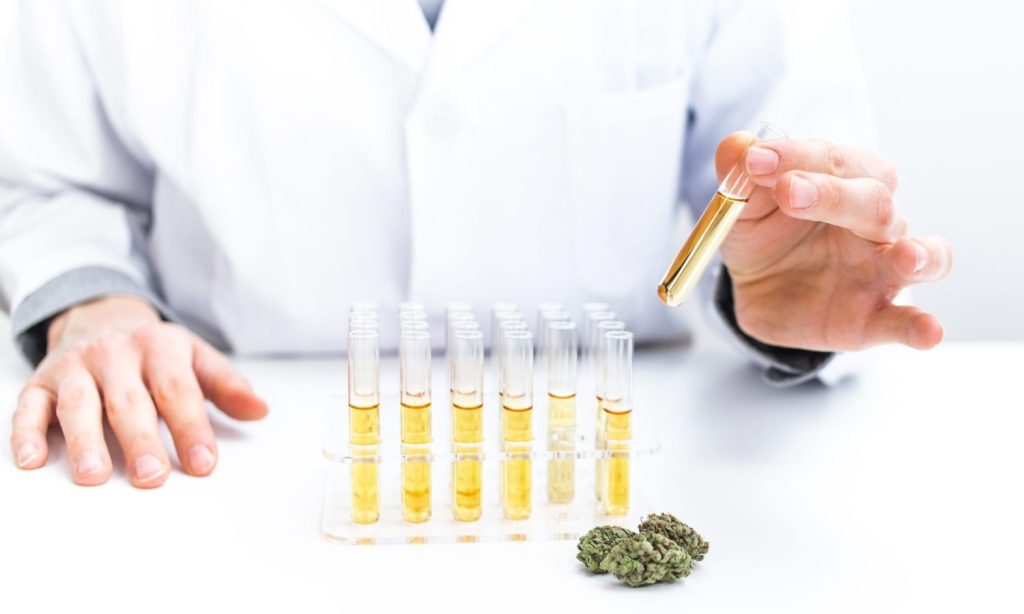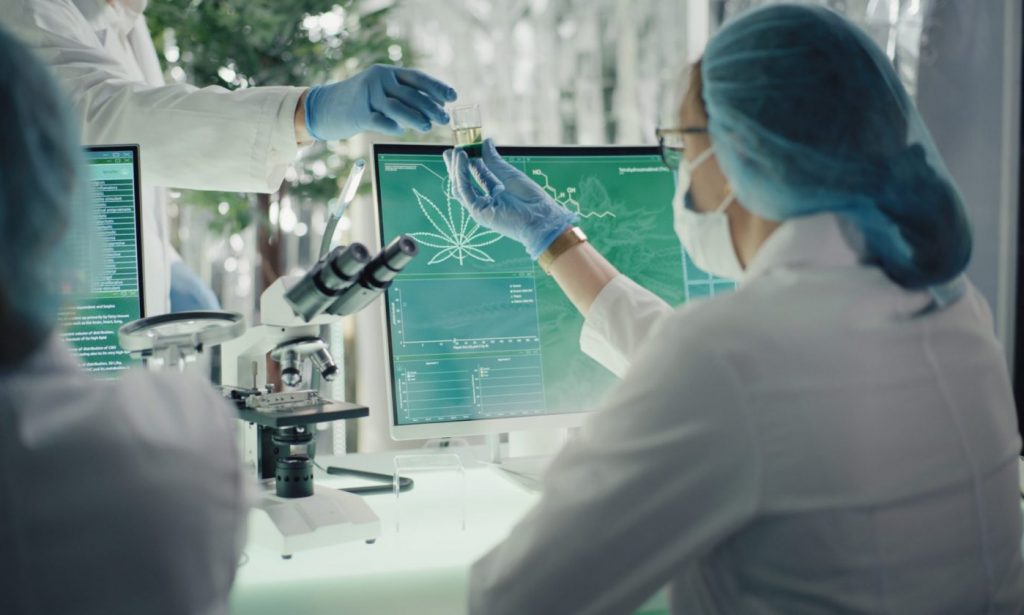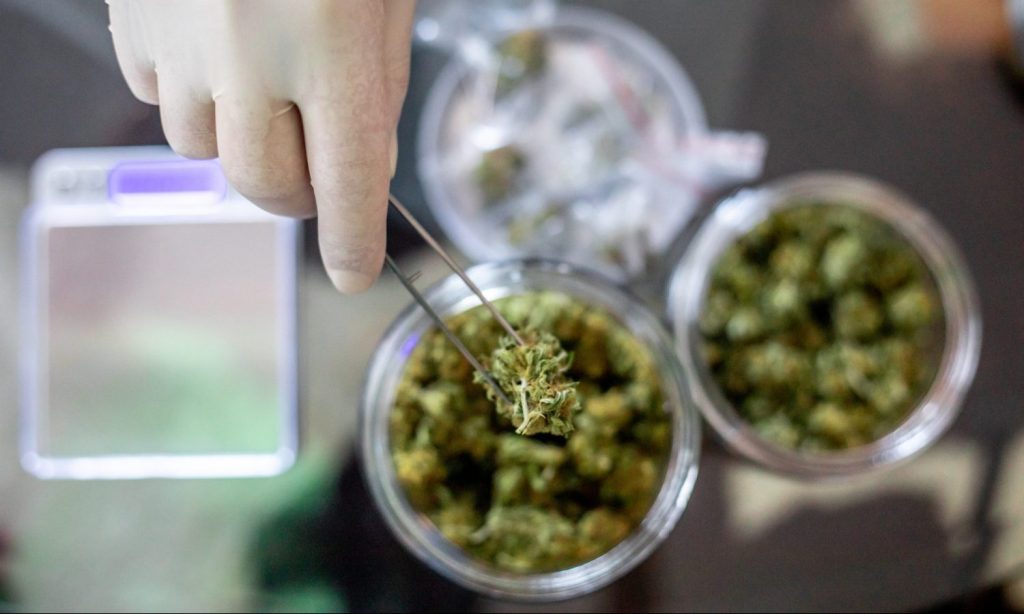
Lab-grown cannabinoids: is the cannabis market ready?
By Natan Ponieman
Much of the disruptive potential of cannabis resides in the plant’s ability to produce cannabinoids such as THC and CBD. However, when it comes to rare cannabinoids, a different approach could produce better results.
Scientists have found alternative ways to make cannabinoids that the cannabis plant doesn’t need. These methods are currently in commercial production and have the potential to transform the entire market for less common cannabinoids such as CBG, CBN, THCV, and THCA.
Photo by boonchai wedmakawand / Getty Images
By adding genes from cannabis to the yeast, biosynthesis companies can make yeast a large number of compounds in the laboratory, including cannabinoids.
Take BioMediCan Inc. The company uses “a unique way” and “a unique yeast for production,” says Biomedican CEO and molecular biologist Maxim Mikheev.
Get to know cannabinoid biosynthesis
Biomedican has developed a biosynthetic platform to create rare cannabinoids and other high quality compounds.
“We’re not competing with anyone else in the growing, harvesting, extraction, and cleaning businesses,” says Biomedican CIO Dennis O’Neill.
The biotech company uses a genetically engineered, proprietary version of yeast to make cannabinoids without the need for cannabis plants. The resulting cannabinoids are said to be bioidentical with naturally occurring molecules.
“We’re 99% pharmaceutical-grade products,” says O’Neill. While the method used by Biomedican uses GMO yeast, the final product contains none of it, which is why the company can claim that its cannabinoids are organic and GMO-free.
Rare cannabinoids: a booming market
According to Ethan Russo, CEO of Credo Science and former medical advisor to GW Pharmaceuticals, smaller cannabinoids will be of “vital research and therapeutic interest” in the years to come.
Phytocannabinoids beyond THC and CBD are miles behind in terms of research investment, but the evidence so far is hugely encouraging of promising developments in the treatment of cancer, autoimmune diseases, and a host of other conditions, he said.
CBG was found to have neuroprotective properties and to contribute to the inflammatory and pain relieving effects of cannabis.
“We know from our own research that CBG has a higher affinity for the receptors of the endocannabinoid system and shows significant potential in many disease areas,” said Aras Azadian, CEO of Avicanna in a recent interview with Benzinga.
RELATED: Research Finds Multiple Benefits of Rare Cannabinoids
Another minor cannabinoid, CBN also has therapeutic properties that can knock CBD off the throne, with research showing that it can have calming, sleep-prolonging, anti-inflammatory, and antispasmodic properties.
“We’re kind of scratching the tip of the iceberg for smaller cannabinoids,” said Jon Vaught, CEO of Front Range Biosciences, in a panel at the recent Benzinga Cannabis Capital Conference.
A Cheaper Way To Make Rare Cannabinoids?
After decades of selective breeding, cannabis plants can produce up to 30% THC or CBD. These are by far the most common cannabinoids present in the plant and on the market.
Rare cannabinoids occur naturally in the plant in much smaller quantities, which is why they can be very expensive to produce.
 Photo by Esther Kelleter / EyeEm / Getty Images
Photo by Esther Kelleter / EyeEm / Getty Images
“These cannabinoids show up in such minimal trace amounts and every plant,” says O’Neill of Biomedican, “it’s just not economical to produce by cultivation.”
However, other players in the industry dare to question this notion. Avicanna, a Canadian cannabis research company, recently developed a CBG-dominant strain that was grown in their Colombian facilities during the first quarter of this year.
RELATED: Why Big Pharma Loves the Power of Synthetic Cannabinoids
According to O’Neill, biosynthesized cannabinoids are much cheaper than those made from plant material. He told us that in today’s wholesale marketplace, CBGA sells for $ 20 per gram, CBN for $ 40 per gram, and THCV for $ 60 per gram.
Using its biosynthetic method, Biomedican can make these rare cannabinoids for less than $ 1 per gram.
“Not only is it better, safer, faster, and cheaper, but we also use 90 percent fewer natural resources and energy to make these rare cannabinoids than if you actually grew the plants,” says O’Neill. “We don’t use soil fertilizers, we don’t use tractors, we don’t use land.”
Separating production from traditional farming methods means that the companies that make cannabinoids this way are not exposed to the unpredictable events such as forest fires and other environmental disasters.
Russo is not convinced, however. He stated that the premise that yeast culture is cheaper than traditional cannabis culture still needs to be clarified.
“I would like to see figures on cost projections and energy audits of yeast crops compared to a situation like Colombia, where three to four crops can be harvested outdoors at high altitudes with fertile volcanic soil and cheap labor,” he said.
The market for smaller cannabinoids
As rare cannabinoids gained prominence as possible alternatives to CBD, many cannabis brands began launching wellness products containing CBG, CBN, THCA, and others.
 Photo by janiecbros / Getty Images
Photo by janiecbros / Getty Images
Dr. Russo says, “It’s not about replacing CBD; rather, additional cannabis components will prove useful as an additive to THC and CBD in cannabis extracts. “
In fact, over 140 different cannabinoids have been identified in the cannabis plant, many of which are still unexplored.
RELATED: Major And Minor Cannabinoids – Which One Need To Know By Name?
“All of these CBD products are sort of a standard product at this point. So [CBD companies] are looking for additional active ingredients to differentiate them in the market and make them significantly more effective, ”says O’Neill.
Biomedican plans to sell its products to companies that have large CBD distribution networks.
The company said it has two products that are now ready for production and should be in high-volume production within nine months. They also aim to sell cannabinoids in bulk to the nutraceutical, cosmetic, and pet care industries.
Chief Investment Officer O’Neill said Biomdican expects to be profitable by the third quarter of 2021.
Controversy: Are Synthetic Cannabinoids Better?
“One of the most important things to us is that we’re outside of state and federal regulations because we’re not touching the plant and we’re not producing THC,” says Biomedican’s O’Neill.
He added that biosynthesized cannabinoids can be safer than cannabis products because the process is not polluted by the soil or toxic contaminants used in agricultural products.
RELATED: The Dangers of Synthetic Cannabinoids
In this regard, Russo is again skeptical.
“The problem with agricultural toxins is a smoke screen. With the right agronomy or indoor cultivation techniques, this is just not a problem, ”he noted.
Biosynthesized cannabinoids are also offered to achieve product consistency, which is something of a holy grail for cannabis growers.
“We do what’s called ‘continuous fermentation,’ which means that we harvest every day instead of every few months,” says O’Neill.
 Photo by CasarsaGuru / Getty Images
Photo by CasarsaGuru / Getty Images
While many growers struggle to achieve batch-to-batch consistency in their products, Russo says it isn’t impossible with the right techniques.
“GW Pharmaceuticals has been successfully growing pesticide-free greenhouse plants for 20 years, which are so consistent that the biochemical fingerprint is practically identical from batch to batch within narrow parameters,” he says.
The scientific achievements in laboratory culture of cannabinoids with yeast are interesting and high-tech, but Russo believes they will never replace conventional cannabinoid culture.
“Yeast technology favors the production of individual molecular products and ignores the ability of plants to produce highly synergistic combinations of cannabinoids and terpenoids known as the entourage effect,” he concluded.
While there will likely always be a place for full-spectrum and whole-plant cannabis products, synthesized cannabinoids could help fill today’s gap in the market for rare cannabinoids and provide an opportunity to create cheaper formulations that enrich the industrially manufactured CBD segment.
This article originally appeared on Benzinga and was republished with permission.

Post a comment: